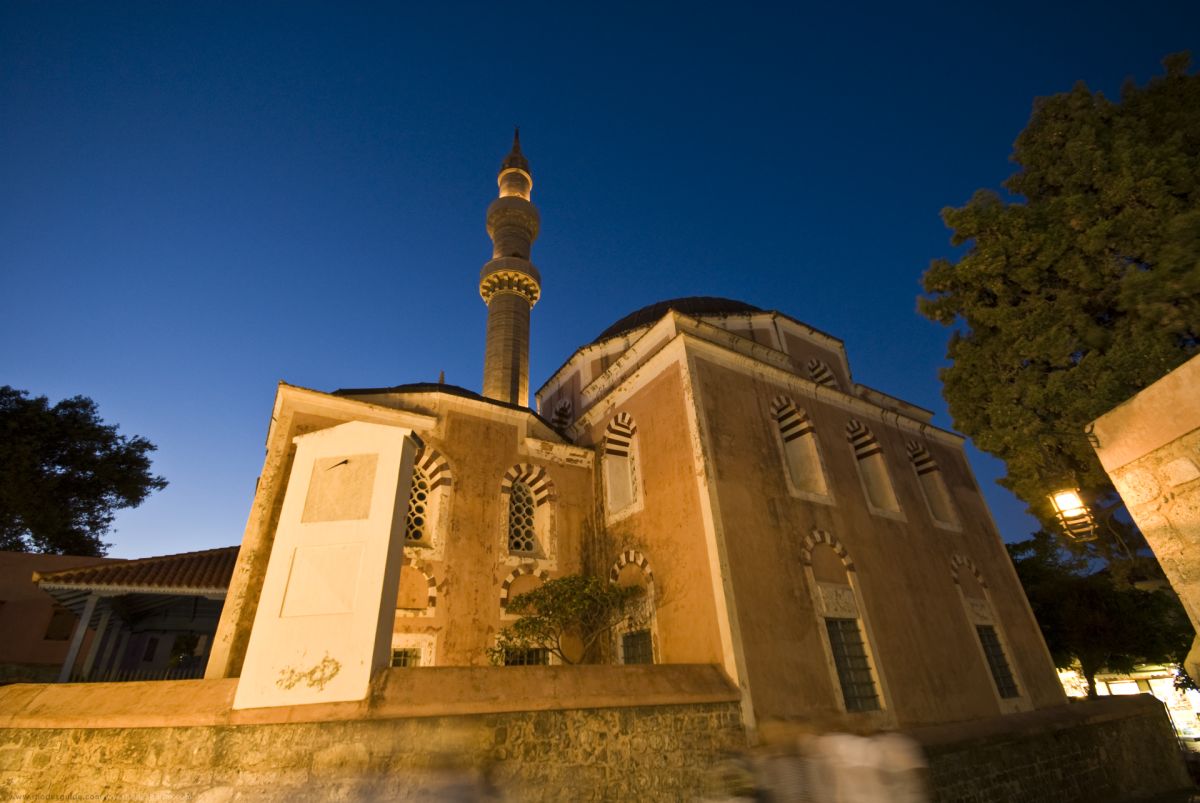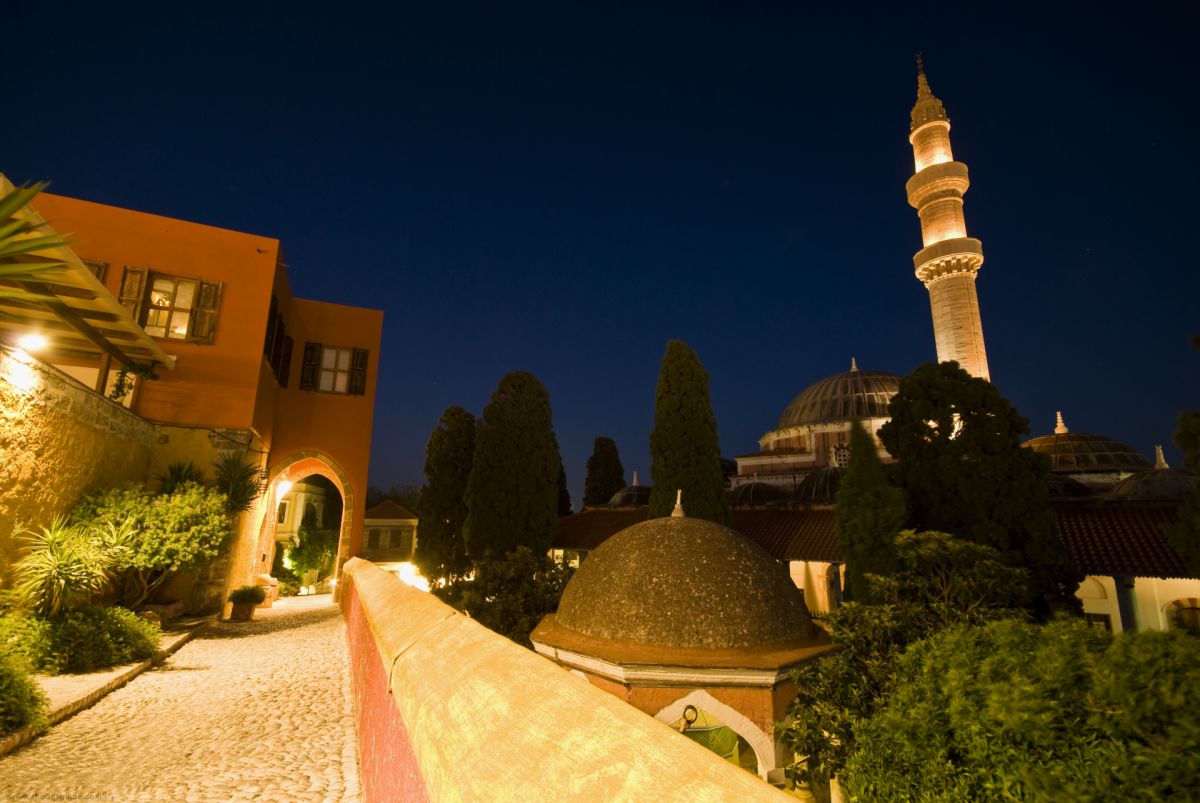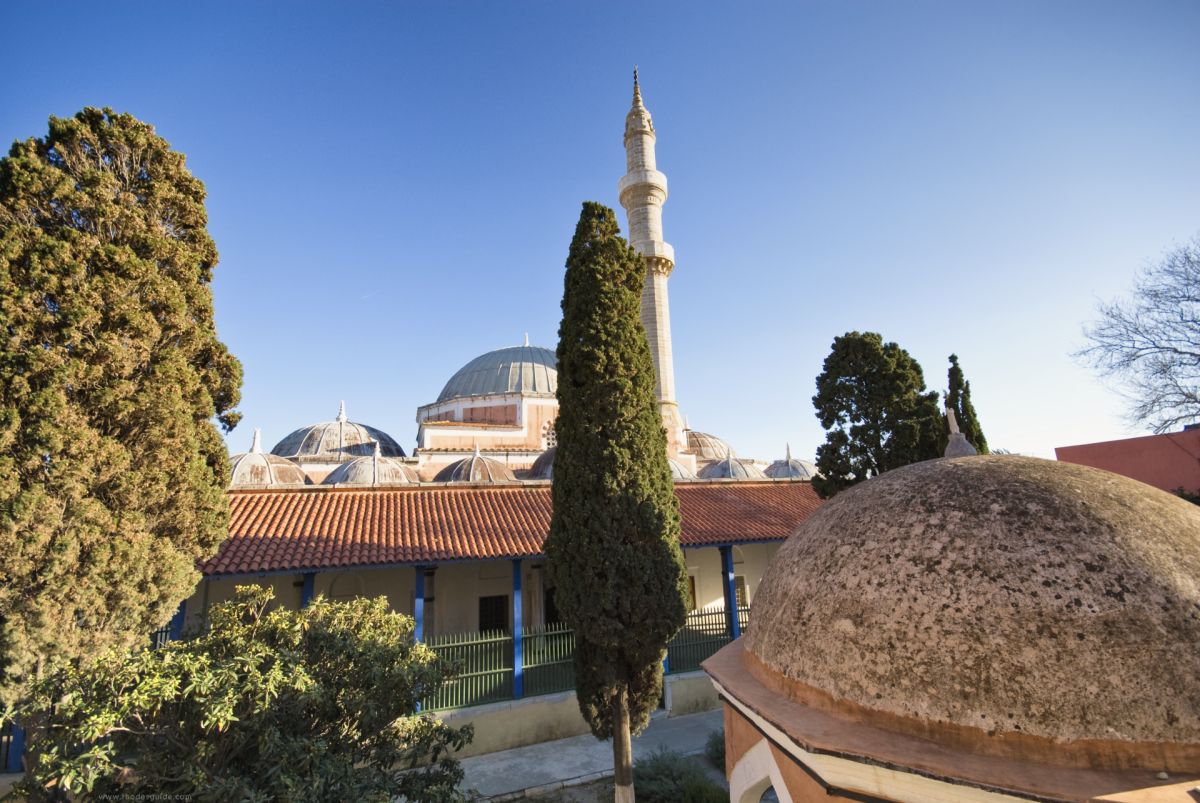Nestled in the heart of Rhodes, the town's very first mosque rises, a testament to the Ottoman conquest in 1522. Legend whispers that its foundations replaced those of an ancient church. Commissioned by Sultan Suleiman, the great invader, the mosque's inception can be traced back to the years 1522-1523. The renowned 17th-century Ottoman traveler, Evliya Çelebi, spoke of an enigmatic inscription on its minaret, signaling refurbishments from 1533-1534 CE.
Time left its marks. In 1808, artisans breathed life into the mosque once more, staying true to its original aura. Sultan Abdulaziz, in his reign (1861–1876), saw its partial restoration. Yet, the tremors of 1856 and a devastating explosion from a nearby church's gunpowder storage cast shadows of ruin. By 1892, a resurgence began: the once single-balconied minaret was bestowed with another.
Though the minaret faced repairs in 1925, it surrendered to time in 1987. A new dawn emerged in 1988: a grand restoration, culminating in 2005, earning the mosque an honorary nod from Europa Nostra in 2006. Today, its doors remain shut, opening only for moments of significance.
Suleymaniye Mosque Architecture
In the heart of the mosque, ancient Ottoman architecture whispers tales of a time when mosques embraced tabhanes—sacred hospices for Sufi seekers. Three domed chambers now hold prayers, with the central sanctum crowned by a grand dome. Flanking it are rooms, each veiled under a modest dome. The central chamber cradles a mihrab, pointing pilgrims to prayer, and a walnut-crafted minbar. Once, these side chambers bore the soul of tabhanes, but time wove them into a vast tapestry of prayer.
Standing sentinel, the mosque unveils a dual narthex: the inner, a ballet of eight columns upholding seven domes, and the outer, framed by columns and crowned with a sloping lead canopy.
Yet, the true marvel lies in the entrance—a marble archway intricately etched with floral tales. This portal, a relic from a Knights Hospitaller monument circa 1510-1520, likely hailed from the Church of Saint John, silenced by the 1856 blast. In 1863, it found a new home in the mosque, whispering hints of its Italian origin, a gift from the Knights.
In crafting mosques, aligning with the qibla, the sacred direction of prayer, often defied the city's established paths and edifices. Such devotion to celestial alignment meant neighboring structures made way, creating unexpected pockets of space. On the mosque's northwest, where its entrance beckons, lies one such void. It blossomed into a square, anchored by a fountain—an oasis for ablutions. This fountain, guarding the Suleymaniye Mosque, boasts an octagonal embrace, with eight repurposed columns cradling a dome.




 English
English
 Deutsch
Deutsch
 Ελληνικά
Ελληνικά